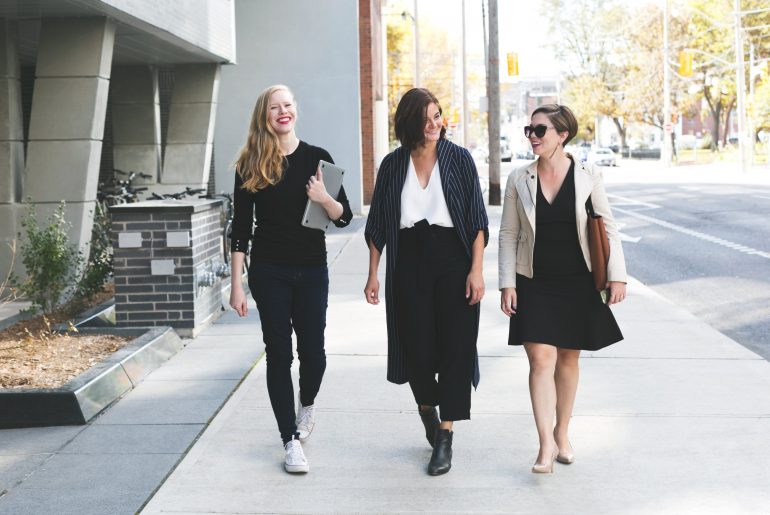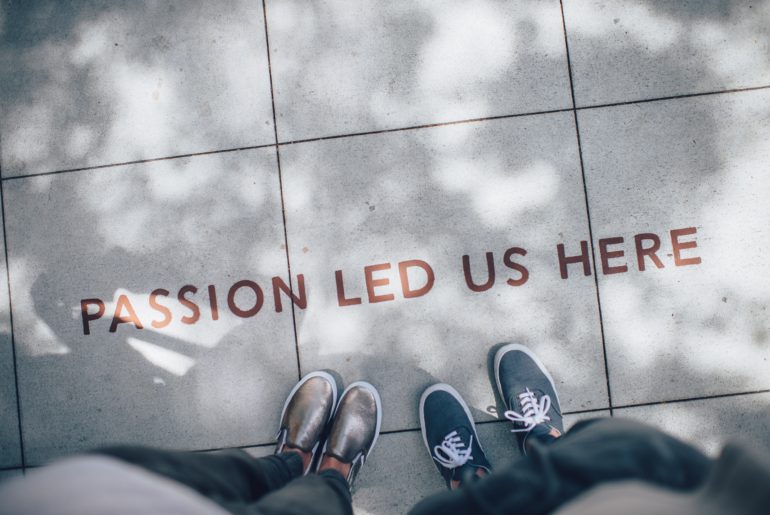This article is re-posted from a Sedentary Behaviour Research Network blog post on 3rd July 2019. Recently, research into the topic of excessive sitting, or “sedentary behaviour”, has been making headlines. The risk for chronic diseases, such as diabetes and obesity, that comes with high levels of sitting is becoming more evident (1). Office workers represent a population that spend a significant amount of time in sedentary pursuits as a consequence of their occupation (2). As more research is being published on the topic, many workplaces are seeking non-sedentary alternatives and solutions to the traditional office environment to keep their employees as healthy and productive as possible. One such solution has been the implementation of activity-permissive workstations. Activity-permissive, or alternative, workstations replace a worker’s traditional desk and are broadly categorized into either standing desks or dynamic workstations. Standing desks allow for a worker to stand while performing a task (e.g., typing, clerical work), and can be installed as additions to an existing workstation, or as height-adjustable replacement units (see Figure 1). Dynamic workstations are designed to allow for activity or movement while working, and include a variety of alternative workstations, such as: treadmill desks, cycling desks, and dynamic sitting desks…
Six Strategies For Sitting Less
Six Strategies for Sitting Less Scratching your head on how your team can BeUpstanding? A recent study by Hadgraft and colleagues and published in the journal BMC Public Health, explored office workers attitudes around reducing workplace sitting. They also sought out workers opinions on a variety of strategies aimed at reducing occupational sitting, which were commonly identified from previous workplace interventions, and their perceived barriers to achieving this in the workplace. A number of strategies were viewed as acceptable and likely to be adopted by workers with some of the strategies addressing multiple influences on sitting and catering to a range of different jobs and preferences. Why not give some of the strategies a try in your workplace! Make use of standing meeting. Sick of sitting through endless meetings? Look to change it up by changing your posture. A standing meeting can be used for a quick check in with the team, while putting stand and stretch breaks into the agenda can help your team reset and refocus. Why not step it up by having a walking meeting for those one-on-one catch ups! Communicating face-to-face. Whenever there’s a short message to be conveyed to a co-worker, employees can tell the…
Standing Up To Sedentary Working
The following article was written by Sophie O’Connell and published in Occupational Health and Wellbeing on the 7th June 2019. The modern world and the constant pursuit of technological growth have almost eliminated the need for movement in our daily lives. While commuting we sit in our cars or on the bus; at work we sit at our computers or in meetings; during our leisure time we sit watching TV, playing computer games or socialising with friends. Because of technology advancements we do not even need to leave the comfort of our own homes to socialise, stay in touch with friends and family, to shop, to work or even be entertained on a screen. This means that, on average, Brits spend around 9.5 hours a day spent sitting. Typically, the amount of time spent sedentary each day increases with age. In working-age adults much of this sitting is done at work. Evidence shows that office-based workers spend around 75% of their working day sitting, with a third of sitting time being done for a prolonged period. Many of us are guilty of spending time sitting for extended periods due to work, travel or various social commitments. But with the growing…
Office Design Impacts Employee Wellbeing
Research shows that in order to create sustainable behaviour change in desk based workers it is important to target individual behaviour, the physical environment, and organisational components. An article in The Conversation by Libby Sander recently highlighted impact of office design on employee wellbeing. Creating an environment which encourages employees to make healthy lifestyle choices can help instigate sustainable behaviour change. Although it may not be feasible for all businesses to invest in massive office redesigns or luxury items such as sleep pods or stairway relocation, the good news is that there are simple and cost effective changes that most businesses can make. These include centralising frequently used office materials, such as printers, recycling, rubbish bins, and mail collection. This small change in location will create more movement in workers’ days by default. Company-wide investment in sit-stand desks may not be feasible for some companies. If there are some resources available, prioritisation should go to those in highest need (i.e., those with less flexibility in their job tasks to be able to leave their desk). Long-term planning may help the organisation allocate a budget for non height adjustable desks to be replaced with sit-stand desks in the future. Full height-adjustable desks (i.e., the whole desk moves…
BeUpstanding™ Champion – What’s That? And Can I Be One?
What’s a champion? A BeUpstanding™ workplace champion is the primary person who runs the BeUpstanding™ Program in their workplace. They get access to the BeUpstanding™ Champion Toolkit which provides free resources and a step-by-step easy to follow guide to help them run the program. The toolkit provides resources such as free posters, videos, and email templates to help create culture change in the workplace. From over 10 years of research, we know that in order to create change it is key to have a workplace champion leading the way. After all, one person really can make a difference! Who can be a champion? ANYONE who has the desire and capacity to run the BeUpstanding™ Program in their workplace can be a BeUpstanding™ champion! No, you do not have to be CEO or management to become a champion. As long as you have management approval, a passion to create a healthier work environment for you and your colleagues, and capacity to run the program, you’re good to go! We have had a wide variety of different champions from all types of workplaces sign up. You can check out the workplace characteristics here. Just to give you an idea… We have had champions from a…
Healthier Workplaces WA BeUpstanding Lunch ‘N’ Learn
Check out this amazing Lunch ‘N’ Learn seminar that Healthier Workplace WA held in November. It was led by Leon Straker who is a professor of Physiotherapy at the School of Physiotherapy and Exercise Science at Curtin University. As an expert in the field, Leon provides a thorough review of the benefits of moving more and sitting less, and the dangers of too much sitting. He also gives a great overview of the BeUpstanding™ Champion Toolkit, what it means to take part in BeUpstanding™, and how you can start your BeUpstanding™ journey today. Lunch ‘N’ Learn seminars are a fun and engaging way to educate the workforce about the benefits of taking part in BeUpstanding™. They can also help people understand how the initiative can fit into their workplace. If you hold a session like this please share it with us! We love to hear your experiences and feedback so we can learn from you!
UQ Commendation Award for Collaborators of the Year!
We have some exciting news! The BeUpstanding™ Team received a commendation award for collaborators of the year from the University of Queensland in the Faculty of Medicine. We are honoured that our hard work over the past year has been reconginised! We could not have done it without the participation and engagement of workplace champions and the support from our incredible industry partners (VicHealh, Queensland Office of Industrial Relations, Safe Work Australia, Heart Foundation / HeathierWorkplaceWA, and Comcare). We have been working hard and have exciting things planned in 2018 that we cannot wait to share with you! To be one of the first to know, sign up to our newsletter (at the bottom of this page). Pictured are just some of our Outstanding Upstanding team. Image (Left to right): Genevieve Maher, Jennifer Warren, Brianna Fjeldsoe, Ana Goode (Program Translation Leader), Genevieve Healy (Principal Investigator), Anne Bannister, Sheleigh Lawler.
Tips from the longest-living populations in the world
‘The Blue Zones’ are populations that experience longer, healthier and fuller lives. You might have heard of some of these before, as scientists love to study their behaviours to try to understand what contributes to their longevity. The Blue Zones include Okinawa in Japan, Sardinia in Italy, Ikaria in Greece, The Nicoya Peninsula in Costa Rica and Loma Linda in California, where people are three times more likely to live to 100 than Australians. People living in Blue Zones enjoy much longer lives and lower rates of chronic diseases such as heart disease, diabetes and dementia compared to that seen in the Western world – Tim Crowe, Associate Professor in Nutrition at Deakin University And what is common amongst the people of The Blue Zones? They lead naturally non-sedentary lives, often moving every 30 minutes or so. While Australians understand the need for exercise, what we aim to do with the BeUpstanding Toolkit is to help people in sedentary jobs move more throughout the day. It’s these small changes to behaviour that can have a big impact on health and wellbeing!








